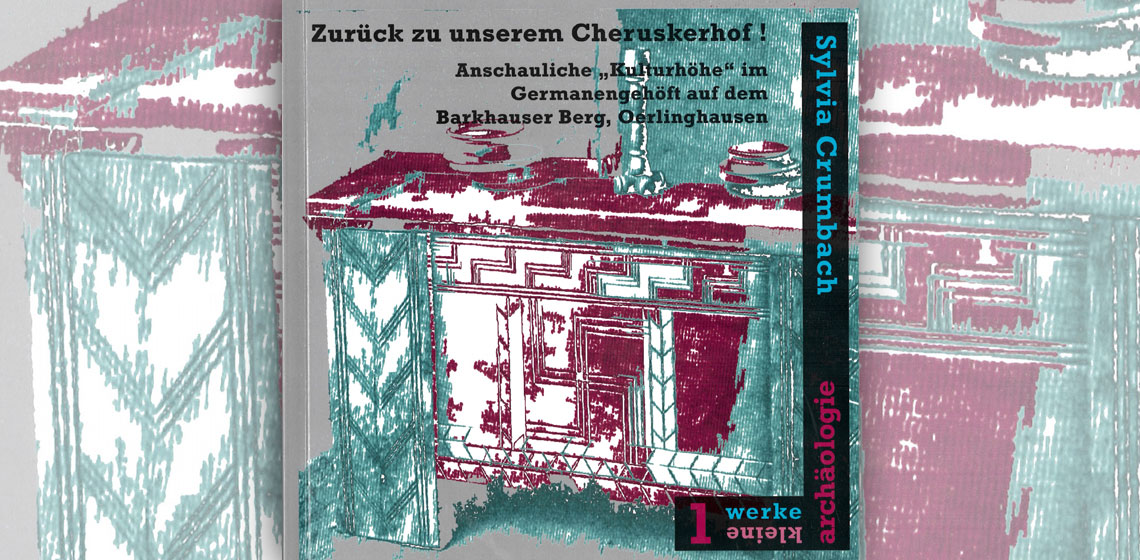
Experimental archaeology in its various manifestations is a transnational historical practice that, for almost one and a half centuries, has managed to fascinate both academic practitioners and laypeople. Although it has many ideological connections – ranging from anti-modernism, nationalism, the life-reform movement, racism, National Socialism, the hippy counter-culture, the New Age movement or the recent museological education/experience boom – its history is relatively understudied, especially in comparison with the related field of the history of (folkloric) open-air museums and world fairs.
Against that backdrop, Sylvia Crumbach’s study of the archaeological open-air museum in Oerlinghausen in the Teutoburg Forest (North Rhine-Westphalia, Germany) is of great importance. The museum, founded in 1936 and still open to the public today, might be relatively small, but can be connected to many of the ideological strands mentioned above, in particular the cultural politics of National Socialism. As such, the book forms part of the important trend in which the ‘Aufarbeitung’ (critical self-reflection) of German National Socialism is related, not only to sites of terror, but also to sites of seduction.
Sylvia Crumbach describes and analyses, in both an institutional and an ideological context, the history of the Oerlinghausen open-air museum, which was dedicated to ‘German prehistory’ (Deutsche Vorzeit). During the ‘Third Reich’, so-called Germanic archaeology was a booming activity, as this research field was believed to be capable of contributing to the regeneration of the Germanic soul of Germany. The push given to archaeology – in which competing institutions like the ‘Amt Rosenberg’ and the ‘SS-Ahnenerbe’ were active – was connected to fixed racialised images of Germanic past and culture that were to gain a broader social base. Archaeological sites were of pivotal importance in this context, being places where people could experience direct contact with this past. ‘Germanic’ open-air museums, like the one in Oerlinghausen, which exhibited ‘Germanic’ houses, ‘Germanic’ material culture and ‘Germanic’ figurants dressed up in ‘Germanic’ clothing, fulfilled the same function.
The history of the open-air museum in Oerlinghausen is strongly connected to the archaeological activities of a local teacher Hermann Diekmann who, although ignored by mainstream archaeologists, in 1930/31 published an account of his discovery a few years earlier of a Germanic dwelling near the Barkhauser Berg in Oerlinghausen. From 1935 onwards he was supported by Hans Reinerth, the National Socialist archaeologist who was the head of the archaeological organisation of the Amt Rosenberg. Diekmann had had a dream of opening a museum of reconstructed Germanic houses since the 1920s, but it only materialized in 1936 with Reinerth’s assistance: the event was intended to commemorate the 900th anniversary of the city of Oerlinghausen. During the opening festivities, which lasted 10 days, a special theatre play called ‘Oerl Bark’ and written by a certain H. Meise, was performed and attracted about 12,000 visitors. The book shows us wonderful pictures of the circa 100 local amateur actors who took part in this play, wearing ‘Germanic’ clothes made especially for this occasion. It is, however, a pity that we are unable to read about the content of the play ‘Oerl Bark’ or its connection with National Socialist ideology.
Crumbach not only sketches the history of the open-air museum during the ‘Third Reich’, but also includes post-war developments. This broad chronological focus really contributes to the value of the book, as the de-Nazification of National Socialist archaeology and its many manifestations, such as regional or open-air museums, is still an understudied topic. We learn for example how the museum – after being reopened in 1961 and destroyed by fire in 1974 - remodelled its houses and refrained from furnishing them. The word ‘Germanic’ was, however, maintained. A guidebook written by Diekmann in 1967, who at that time was still actively involved in the running of the museum, reveals disturbing continuities as he states that an interest in the early past contributes ‘zum Wohle der Heimat’ (to the wellbeing of the German nation) – a phrase chillingly reminiscent of the rhetoric of the National Socialist era.
Although Crumbach’s academic style does not make the book an easy read, its openness may serve as an example to those local museums in Germany that still avoid opening up their recent past to critical scrutiny. As such it will, in particular, help deconstruct those images of the Germanic past which were promoted during the National Socialist era and which are, nowadays, often not that easy to identify as they have been absorbed into the common consciousness.
Book information:
CRUMBACH, Sylvia, 2014, Zurück zu unserem Cheruskerhof! Anschauliche “Kulturhöhe” im Germanengehöft auf dem Barkhauser Berg, Oerlinghausen Kleine Werke zur Archäologie Band 1 (Welt und Erde Verlag; Loogh 2014).
ISBN 978-3-938078-15-0